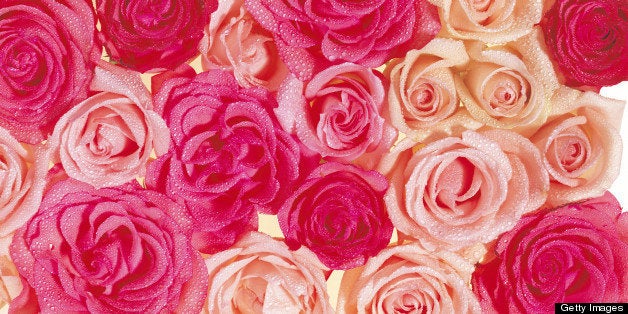
Sadly, roses have fallen out of fashion. Landscape designers now understandably laud sculptural, undemanding succulents, drought-tolerant grasses and thrifty natives that feed local wildlife. Sustainability advocates rightly focus on the need to use our disappearing water to grow our own fresh food close to home (but forget that rose petals are tasty in salads and.sandwiches and rose hips make a delicious herbal tea rich in Vitamin C).
Roses are seen as temperamental, thirsty, greedy divas who demand water, time and energy now in short supply.
But roses are not so easily denied. Their history in human lives and gardens is ancient and deeply soulful. Thousands of years ago, the Chinese were tending still-available roses like 'Old Blush' and 'Mutabilis.' The Middle East had its Damasks, whose fragrance delighted the poet Rumi. And Old Europe too had its antique, highly-fragrant roses, lauded by Shakespeare and the poets. Any era that values emotion, beauty, romance and the archetypal feminine must have its roses!
So how did roses fall from grace in modern gardens?
The problems began with exhibition and were exacerbated by the use of toxic chemical sprays. Rose exhibition, which started in earnest in the 19th century, involved removing roses from their natural garden ecosystems and showing them competitively like dogs or beauty queens -- complete with various fussy methods of primping for the judges' admiration. Breeding for exhibition usually neglected every aspect of the plant but the all-important, fancy bloom. The result was a host of non-fragrant roses with knobby knees and gawky habit.
With the advent of chemical sprays, breeders could also ignore disease resistance. So many roses from the era of Peak Spraying (the 1950s-80s) are ungainly, sickly drug addicts, unable to thrive without their fix.
At that point many gardeners got fed up and started banning roses from their landscapes. Who needs a plant that is ugly in the garden, offers no scent and is so weak it can't survive without constant fussing? And who wants to bring toxic sprays into our home gardens, where they can affect the health of children, dogs, beneficial insects and rose gardeners?
Fortunately, the 1980s also brought us a revival of interest in the tough and beautiful old-fashioned roses. Soon hybridizers like England's David Austin were using the strong genetics of the old roses to create "reproduction" roses with the grace and fragrance we long for, plus some of the vivid modern colors we love. But even these early "repros" too often required spraying and large amounts of water.
The 1980s also saw the formation of a number of organizations devoted to "rose rustling" -- the discovery and preservation of heritage roses found in old cemeteries and homestead gardens. Heritage rose lovers have spent recent decades promoting the use of locally-discovered, tough survivor roses in regional landscapes -- and busting outdated myths about the difficulty of caring for them..
So we have a good news/bad news situation here. A wide array of locally-appropriate heritage roses and recent cultivars that offer old-fashioned beauty and fragrance plus great disease resistance are now available to the interested gardener. The bad news is that so few modern gardeners or their landscape advisors are interested.
Why? One reason is that landscape professionals make more money selling hardscape than landscape, with the plants sometimes almost an afterthought. Plus, too many landscape experts and home gardeners have an outdated understanding of roses. They still think of them as the garish, sickly, difficult divas with ugly legs from earlier decades, suitable only for old ladies with unlimited time and an excellent Haz-Mat suit.
The truth is that roses -- if you buy the RIGHT roses (old or new) for your location and climate -- are incredibly tough shrubs that can survive almost anything -- even the gardener's ignorance. The secret is to ignore all the "shoulds" and plant roses that people in your area have grown successfully for years. Don't succumb to endless advice about fussy pruning or complicated feeding. Just give your roses a drink of your excess kitchen water as our ancestors did, plus some compost and manure in spring and fall.
Spring is the season when our roses reward us for their care, however casual it has been. Their blooms gladden all but the most callous hearts. So don't forget to stop and smell your beautiful roses! There's nothing like them in the plant world and once you get a whiff of your own home-grown treasures, plus enjoy fresh, unsprayed rose petals in your salads and succulent, red hips in your herbal tea, you'll realize why we can't afford to lose the roses from modern gardens. Our ancestors around the world knew a good and useful plant when they saw one and that's why so many roses have survived.
Growing roses is also ecotherapy, especially for women. Like all nature-connection, it heals the body, mind and soul.
And don't forget the greatest bonus of growing your own roses: the opportunity to share fragrant blooms with those you care for. The highly sprayed, imported florists' roses, exhausted from their flight from South America, are no substitute. The roses you grow in your own garden or on your patio or balcony are an archetypal expression of human love - as they always have been, down through the ages.
